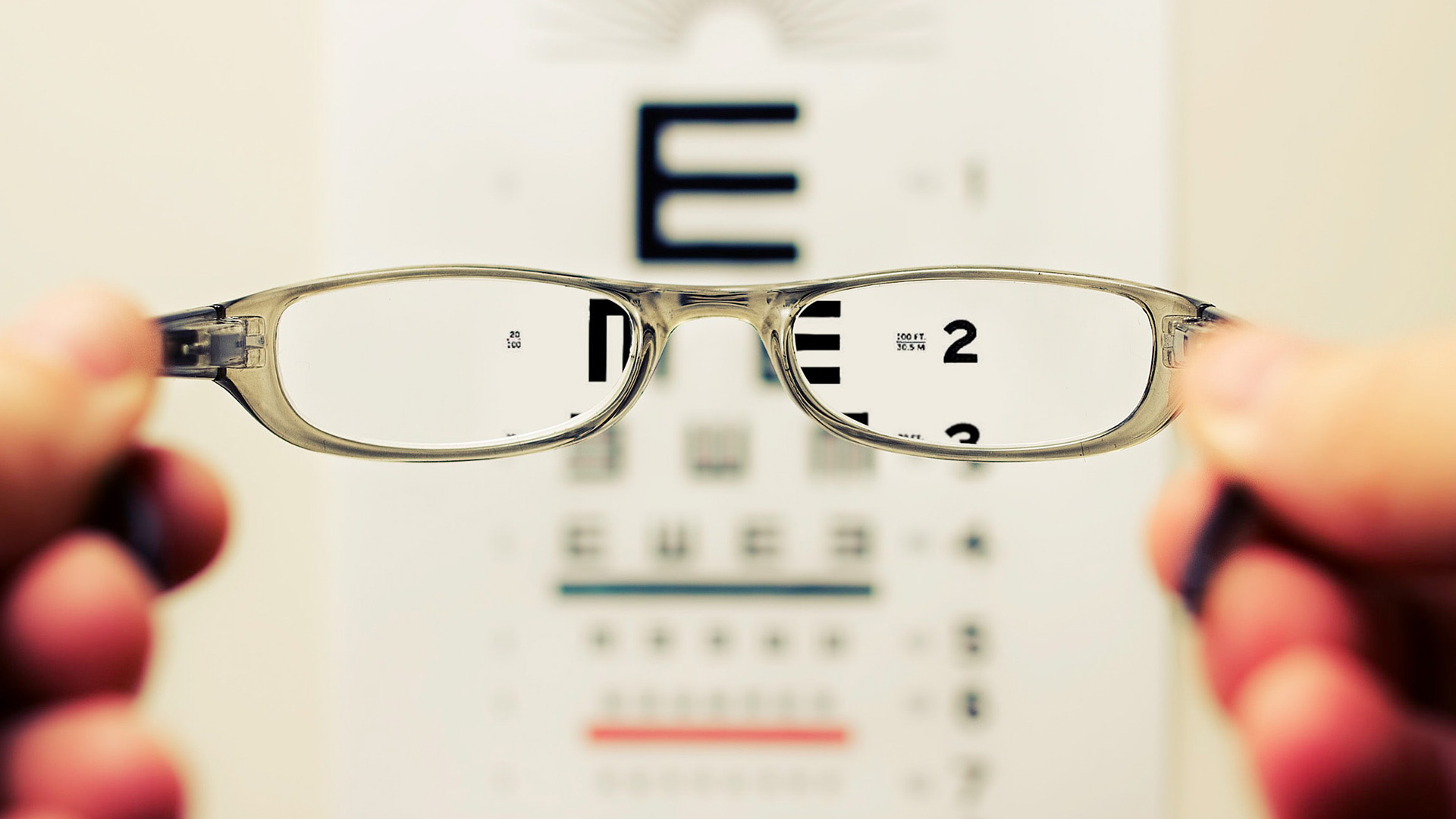If you’re one of the 36 million contact lens wearers in the U.S., chances are you went through a mini-course in hygiene when you first got your prescription. You know the drill: First wash your hands with soap and water before drying them with a clean, lint-free cloth or paper towel. Then, carefully take the contact lens out of your eye before gently “massaging” it in your hand with some solution to get the debris off. Pop the contact in a case that’s filled with fresh solution before screwing the lid on.
But if you’re being honest, how often do you actually follow all of these steps every single time you remove your contacts (which are technically medical devices)? And how often do you do things your optometrist or ophthalmologist warns you against — like sleeping or swimming in your contacts, or wearing your monthlies for longer than a month — figuring, “Eh, nothing bad has happened to me yet”?
We enlisted two eye-care experts — Andrea Thau, O.D., an associate clinical professor at the SUNY College of Optometry and a spokesperson for the American Optometric Association, as well as Rebecca Taylor, M.D., an ophthalmologist in private practice in Nashville, Tenn., and a spokesperson for the American Academy of Ophthalmology — to guide us through the common mistakes soft contact lens wearers make, what should be done instead, and the worst that can happen with poor hygiene. You might be convinced to change your bad habits for good.
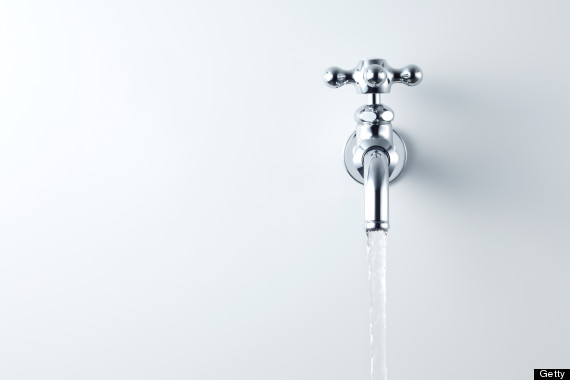
What you’re doing: You let tap water come into contact with your contact lenses.
Why you should stop: Seems harmless enough, right? Wrong. That’s because tap water isn’t salty like tears are, so contact lenses tend to absorb the water and swell. The contact lens will then “hold” it, which is a problem because water — even water safe to drink — isn’t sterile and contains microorganisms. “If your lens swells, it changes how the lens fits on your eye and it will often make the lens tighten on the eye,” Thau says. This can then create microscopic breaks in your cornea that microorganisms can get into, potentially causing infection. That’s why it’s important not to shower or swim with your contact lenses in, she says (plus swimming in your contact lenses ups the chances of them coming out of your eye). In addition, you should never use water in place of solution for storing your contact lenses.
What you’re doing: Your contact lenses are bothering you but you don’t have solution with you, so you use water or your own saliva as “emergency” solution to wash them before popping them back in your eye.
Why you should stop: Two words: bad idea. For the same explanation above, exposing your contact lenses to water isn’t smart, and your saliva is ridden with bacteria that belong in your mouth and not your eye. Putting contacts in your mouth is “like putting them in a petri dish — you just don’t want to do that,” Taylor says.
If you do catch yourself in a situation where your contact lenses are bothering you but you don’t have access to solution and a contact lens case, Thau says your best bet is to just throw them away. Another option is to use lubricating drops made for contact lens wearers (not the kinds to combat red eye) to try to relieve any discomfort. And of course, it’s always wise to carry some emergency and a contact lens case with you at all times for moments like this.
What you’re doing: You re-use your solution.
Why you should stop: Recycling solution is like begging for an eye infection. All the debris and bacteria that are in your eyes and are on your contact lenses, come off into the solution. So if you’re re-using the same solution time and again, that means you’re letting your contact lenses stew in a bacteria-ridden pool of liquid — and then putting those same contacts right back into your eye. If you have any microscopic breaks in your cornea, those bacteria can then infect the cornea. Instead, take care to use fresh solution every single time you need to store your contacts. Or, if you hate dealing with solution and cases, consider daily disposable lenses.
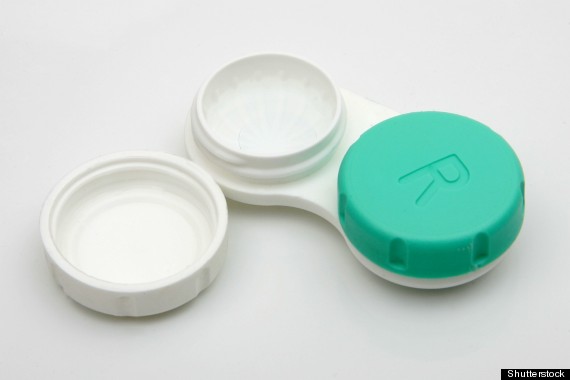
What you’re doing: You’ve been using the same contact lens case for as long as you can remember.
Why you should stop: First things first: Go to your bathroom and throw that old case away. Contact lens cases should only be used for three months tops before you replace with a new one, Thau says.
What you’re doing: You wash your contact lens case with water, and then close it up before letting it dry completely.
Why you should stop: The best way to keep your contact lens case clean is to wash it with solution, not water, since (as you know by now) water shouldn’t come into contact with your contact lenses, Taylor says. Then wipe the case dry with a clean towel or let it air dry completely before putting the lids back on.
It’s better to just get a brand new, clean case than try to disinfect it yourself by running it through the dishwasher or boiling it, Taylor adds.
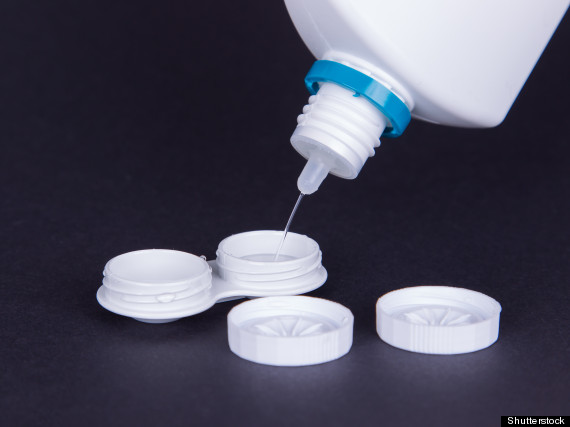
What you’re doing: You use the off-brand solution.
Why you should stop:When you opt for generic contact solution, you’re playing roulette, Thau says. That’s because stores that sell their own brands actually purchase the solution from other companies, so you don’t know what kind you’re getting. Thau says her best advice is to talk to your doctor about the best solution for your own eyes, and then stick to that brand. “It’s not a good idea to switch solutions without having that discussion,” with your eye doctor, she says, since you can develop “allergies, sensitivities and dry eye by switching.”
What you’re doing: You’re using contact lenses you got from your eye doctor five years ago.
Why you should stop: Maybe you took a few years’ break from contacts, or maybe you’re just really bad about throwing away your monthlies after just a month (thereby creating a surplus of yet-to-be-used lenses). But any way you look at it, you shouldn’t use contact lenses that are several years old. For starters, the prescription might just not be right anymore. But another thing to consider is that the solution the lenses are stored in has an expiration date. “So the lens, when the solution expires, can cause infection and become very uncomfortable because of the pH [level] change,” Thau explains.
On that note, solution you buy at a store also goes bad, so if you’re one of those people who stocks up on everyday-use items, make sure to check those expiration dates, too. “Solution can over time break down, especially if exposed to sun or heat,” Thau says, which can be bad considering its two main functions are to not bring infectious material into your eye and to prevent infection.
What you’re doing: You have a prescription for two-week lenses, but only wear contacts once a week for flag football games — so you use the same lenses once a week for 14 weeks.
Why you should stop: Sorry, penny-pinchers: If contacts are approved to be used for 14 days, “it’s two weeks from the time you open that lens package, it’s not 14 days of wear,” Taylor says. After that time period is “when the lens starts to break down; the surface starts to break down and take on your protein, [and] mucus and bacteria that normally hangs out with us on our eyelids can lead to infection.”
What you’re doing: Your vision is just a little blurry, or your eyes hurt just a little bit, but you wear your contact lenses anyway.
Why you should stop: Make this your mantra: When in doubt, take them out. If your contact lenses are causing you any discomfort, or your eyes look just the slightest bit red, it’s better to listen to your body than suffer through the discomfort and potentially develop an infection. “You should make sure your eyes look good, feel good and see good,” Thau says. “By looking good, I mean your eyes should look clear and white. Your eyes should not look red or irritated. And by see good, I mean you can see well and clearly … If you’re not seeing well, that’s a sign that theres a problem. And then your eyes should feel good, with no physical pain or discomfort.”
Thau says the first line of defense should be to apply lubricating drops made for contact lens wearers. But if that isn’t enough, just take the lenses out. “Inspect the lens, make sure it’s not torn or cut. If it looks like Cookie Monster took a bite out of it, don’t use it,” she says. “You can get a scratched cornea, called a corneal abrasion … You can always replace your contact lenses, but you can never replace your eyes.”
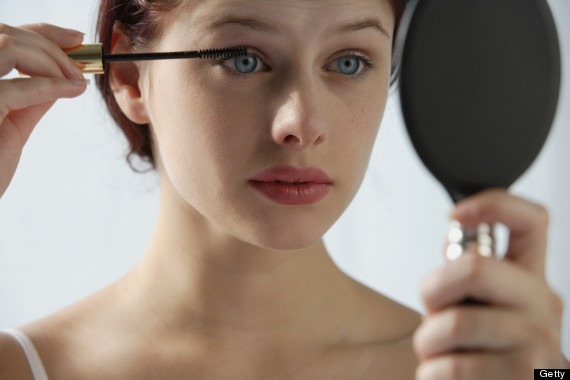
What you’re doing: You put your contact lenses in after putting your makeup on.
Why you should stop: Believe it or not, there is a correct order of operations for people who wear both makeup and contacts. To avoid getting makeup on your contact lenses, Thau recommends putting contact lenses in your eyes before applying makeup, and then taking them out before removing eye makeup.
On that same note, she also advises against putting creams or lotions on your hands before handling. “Your hands should be clean; put your lenses in first before you handle any products,” she says.
What you’re doing: You use waterproof makeup.
Why you should stop: Thau warns contact lens wearers to not use waterproof makeup because if the makeup gets on the lens, it will bind to it. And because waterproof makeup requires an oil-based remover, it will “grease up the eyes and the lenses,” she says.
What you’re doing: You wear your dailies for longer than a day, your monthlies for longer than a month, etc.
Why you should stop: Your contact lenses are made of plastic, but they actually have pores to help keep them moist in your eyes. However, these pores can then get dirty and trap debris and dirt in the lens, Thau says. If you use your contact lenses for longer than recommended, you’re setting yourself up for trouble, including eye irritation, dry eye, an infection or overall discomfort. An analogy Thau uses: “You probably don’t wash your saran wrap from a tuna fish sandwich and reuse it over and over again.”
What you’re doing: You sleep in your contact lenses.
Why you should stop: “It’s sort of like sleeping with a plastic bag over your head,” Taylor says. That’s because sleeping with contacts in your eyes severely limits oxygen transmission. When you are awake, your cornea receives oxygen from the air and from your tears. But when you’re asleep, the cornea receives less nourishment, lubrication and oxygen because your eyes are closed and you are not blinking. Therefore, when you put a piece of plastic — i.e., your contact lens — over the cornea overnight, you are further depriving your cornea of oxygen. Thau explains that this can lead to your contact lens tightening in your eye, causing microscopic rips to the cornea — and if there’s a microorganism also in your eye, that could also lead to infection. Now, some contact lenses are approved by the Food and Administration for overnight and extended wear. If you’re dead-set on being able to sleep in your contact lenses, Thau advises you to talk to your doctor about getting a prescription for one of these types of lenses.
Note: If you experience any pain or discomfort from your contact lenses, remove them and contact your eye doctor. Eye infections, if left untreated, can lead to temporary or permanent blindness. For more information on proper care and hygiene for contact lenses, click here.
Correction: A previous version of this article stated that you should not reuse saline solution. Saline solution and disinfectant solution are different, in that saline solution should not be used to store contact lenses. Only disinfectant solution should be used to store contact lenses.

